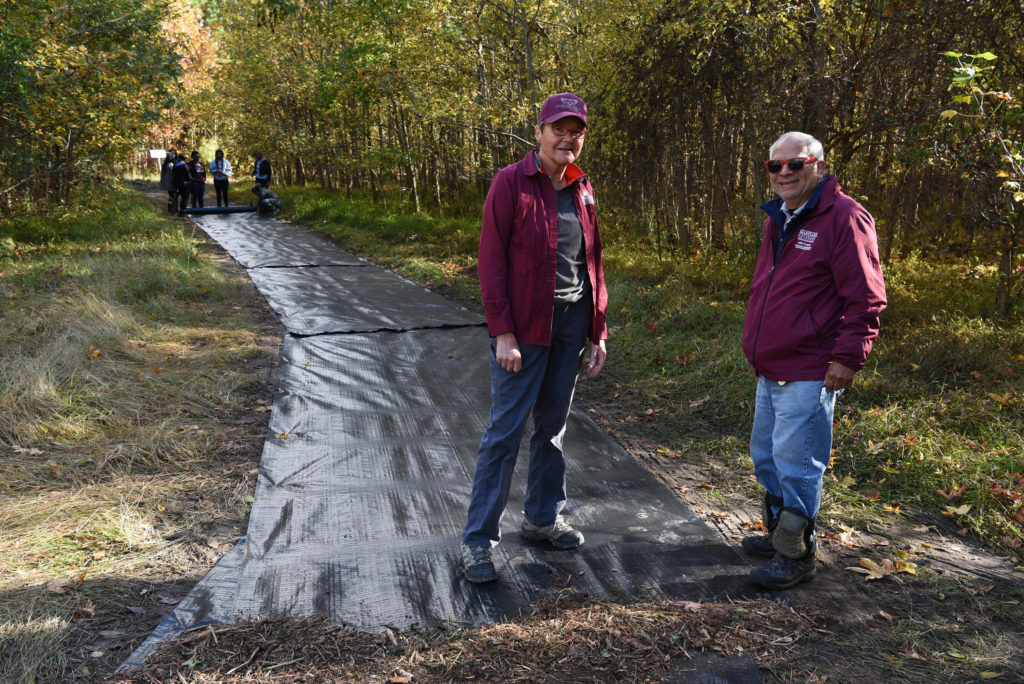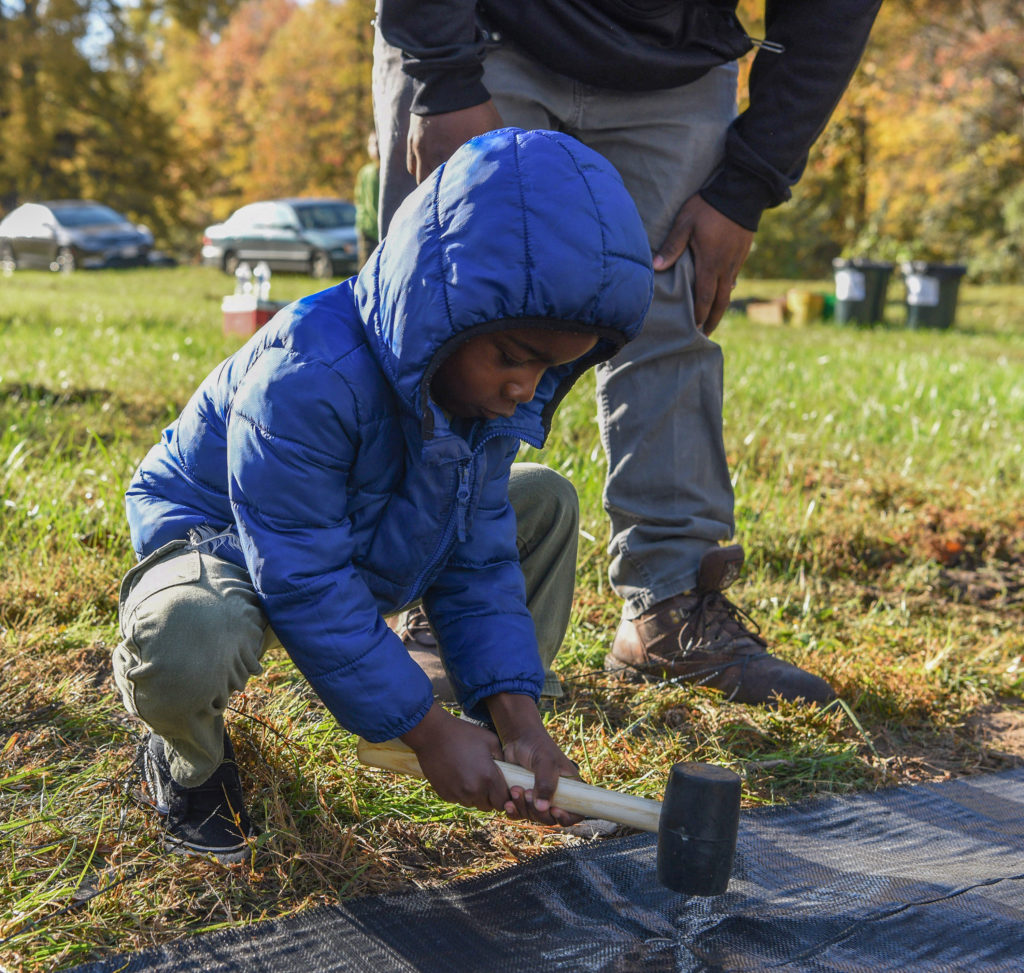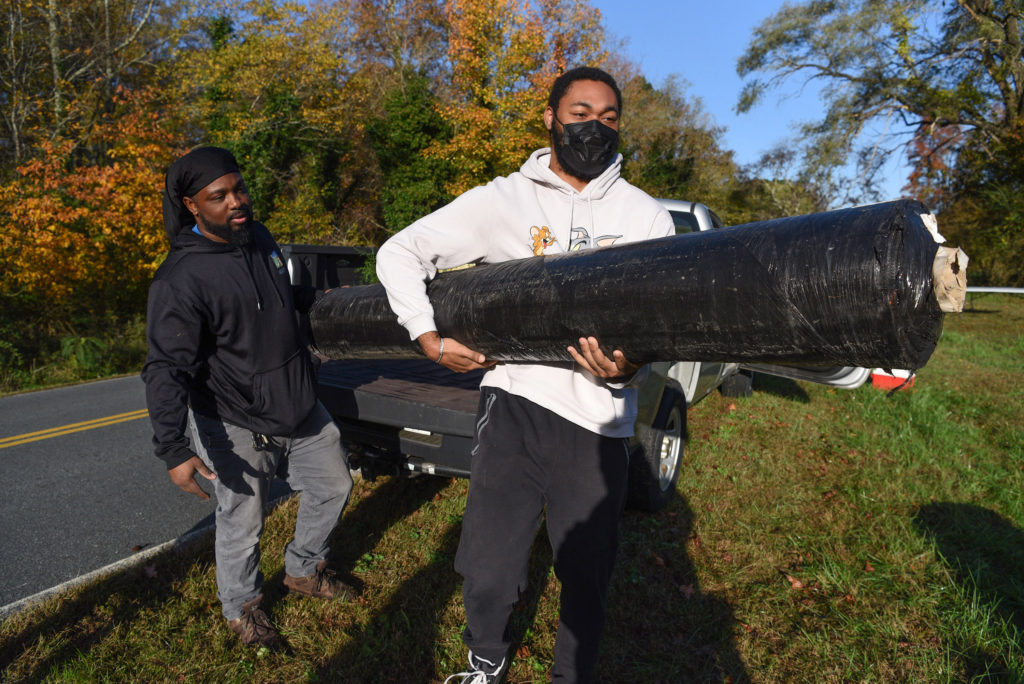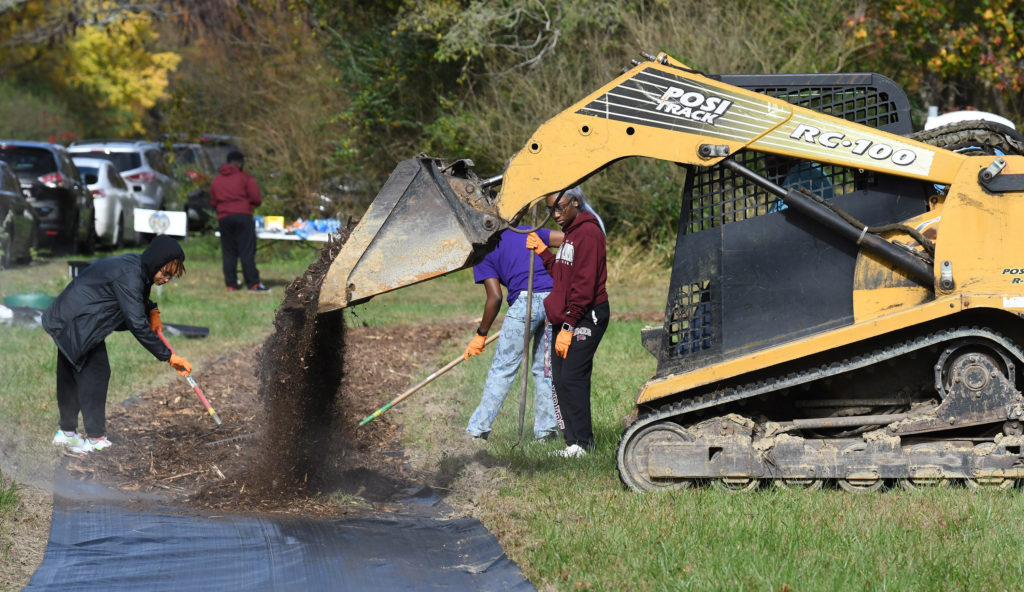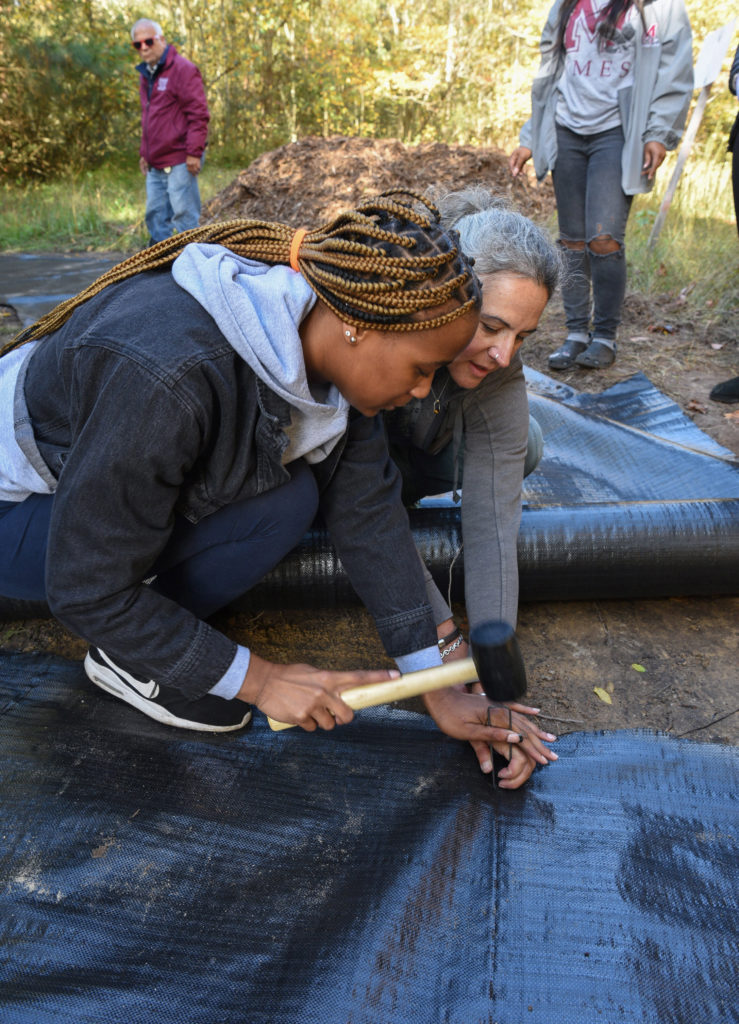
The UMES community came together October 29 to lay the path for Hattie’s Trail, part of the future Buffalo Soldier Living History Site in the quaint Wicomico County town of Allen. Hattie’s Trail is named after the wife of a Buffalo Soldier, Thomas E. Polk Sr., whose family still owns the land he purchased in 1892 on his return to the Eastern Shore. It was on his land that the trail surrounding the woodland was created during a UMES Extension hands-on training, “From ‘Useless’ Woods to a Place of Peace and Relaxation.”
“It was a beautiful fall day,” said Henriette den Ouden, a consultant with UMES Extension and lead for the Hattie’s Trail workshop. “Even more heartwarming than the weather was the enthusiasm of the 40 volunteers who truly showed what a group of people can accomplish when working together!” Everyone involved got a “good workout,” she said, and more importantly, they experienced “by doing” what is needed to increase the accessibility of woodlands.

Students representing university groups, Men of Distinction and Women of Respect, Tact and Honor (WORTH) laid the groundcover (weed fabric secured with staples) for the path, assisted by members of the community and UMES Extension staff, including McCoy Curtis, a Well Connected Communities program assistant. One group, den Ouden said, started on the north side and the other on the south, meeting in the back of the property to complete the whole circle. The groundcover was then covered with woodchips.
“The process and technique will save approximately 150 gallons of broad-spectrum herbicide that would have had to have been sprayed on the trail over a 10-year period, the life of the fabric,” den Ouden explained.
“UMES is grateful to Mrs. Deborah Scott (Polk’s granddaughter) for initiating such a valuable community project,” den Ouden said. “With this first phase completed, we are ready to come together again for the next phase.”
With sufficient funding, Scott said, the goal for completion of the entire project is 2025. For more information or how to get involved, contact Scott at fehcscott@gmail.com. For information on UMES Extension’s future involvement with the project, contact den Ouden at hdenouden@umes.edu.
Gail Stephens, agricultural communications and media associate, University of Maryland Eastern Shore, School of Agricultural and Natural Sciences, UMES Extension, gcstphens@umes.edu, 410-621-3850.
Photos by Todd Dudek, agricultural communications, University of Maryland Eastern Shore, School of Agricultural and Natural Sciences, UMES Extension, tdudek@umes.edu, 410-621-4707.
Photo captions below clockwise:
(1) UMES Extension consultant Henriette den Ouden, left, and Associate Dean for UMES Extension Enrique N. Escobar take a break during work to lay weed fabric on the path for the first phase of Hattie’s Trail in Allen, Md. (2) Machai Martin, 5, pounds in staples that will keep the fabric in place. (3) Martease Martin, left, and Jaylen Hunter with Young Men of Distinction Salisbury chapter unload rolls of the weed fabric for the trail. (4) Volunteers help spread woodchips with the aid of a piece of equipment and operator generously donated for the day. (5) Kalyn Ingram, left, a UMES WORTH club member, and Lucy Pope work on pounding staples into the bottom layer of groundcover for Hattie’s Trail.

